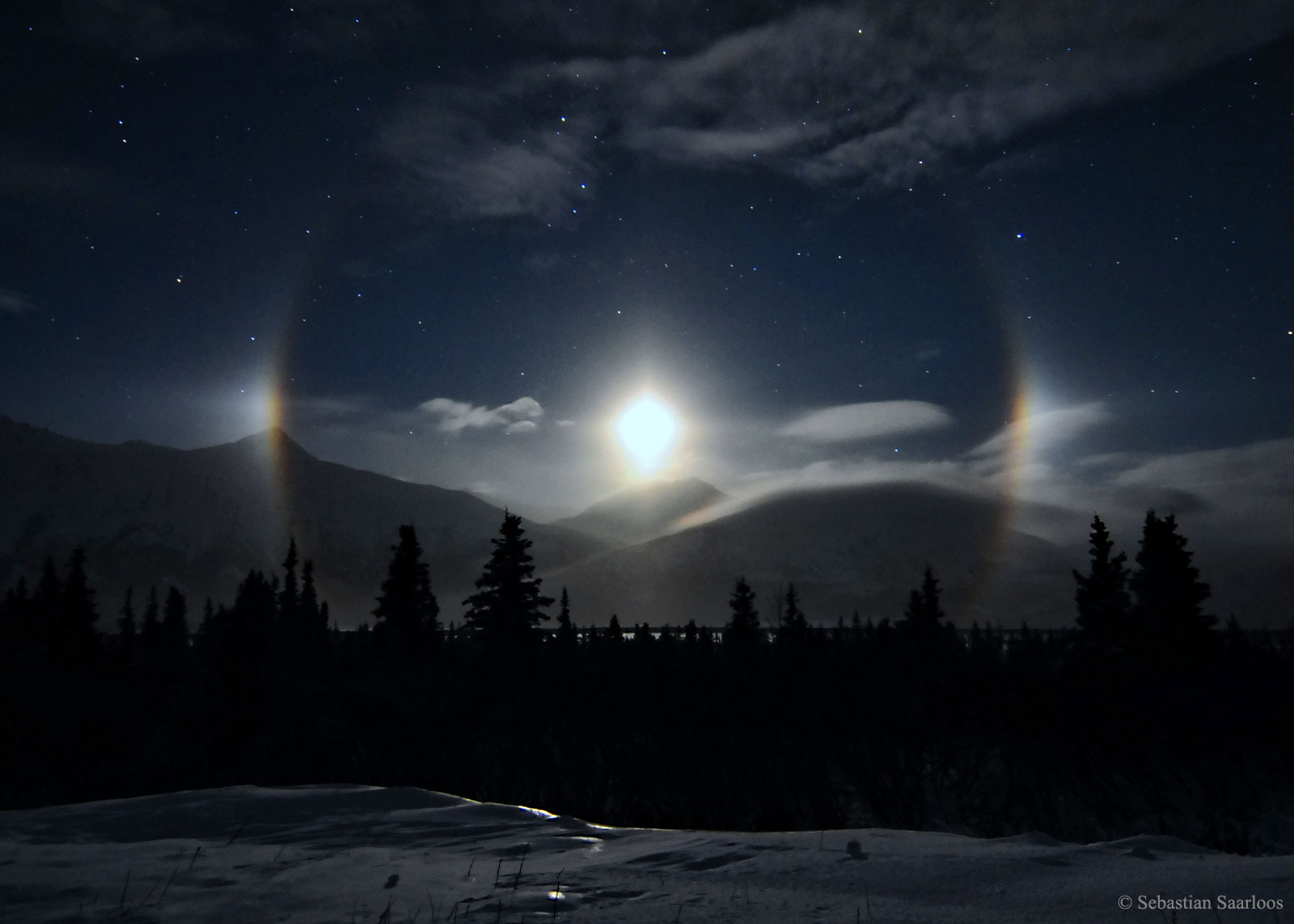
Copyright:Sebastian Saarloos
原文:
What’s happened to the sky? Moonlight illuminates a snowy scene in this night land and skyscape made on 2013 January from Lower Miller Creek, Alaska, USA. Overexposed near the mountainous western horizon is the first quarter Moon itself, surrounded by an icy halo and flanked left and right by moondogs. Sometimes called mock moons, a more scientific name for the luminous apparitions is paraselenae (plural). Analogous to a sundog or parhelion, a paraselene is produced by moonlight refracted through thin, hexagonal, plate-shaped ice crystals. As determined by the crystal geometry, paraselenae are seen at an angle of 22 degrees or more from the Moon. Compared to the bright lunar disk, paraselenae are faint and easier to spot when the Moon is low. Follow APOD on: Facebook, Google Plus, Instagram, or Twitter
中文翻譯:
🌕✨ 發現天空奇觀!在2013年1月的底米勒溪,阿拉斯加,月光照亮了這個雪白的夜景。畫面中,第一季度的月亮在西方山脈的地平線上光芒四射,周圍圍繞著一圈冰冷的光環,左右則各有一個明亮的月狗(moondog)。這些現象亦被稱為「假月」或paraselenae(複數)。與陽光下的「日狗」或parhelion類似,月狗是月光穿過薄的六角形冰晶折射所產生的。根據晶體的幾何形狀,paraselenae與月亮之間的角度通常在22度以上。相比亮眼的月球,paraselenae呈現出微弱的光芒,當月亮低懸時更容易被觀察到。
#月亮 #夜空 #冰晶 #星空奇觀 #阿拉斯加 #月狗 #假月 #天文現象 #攝影藝術 #自然之美
來源:NASA每日圖片


